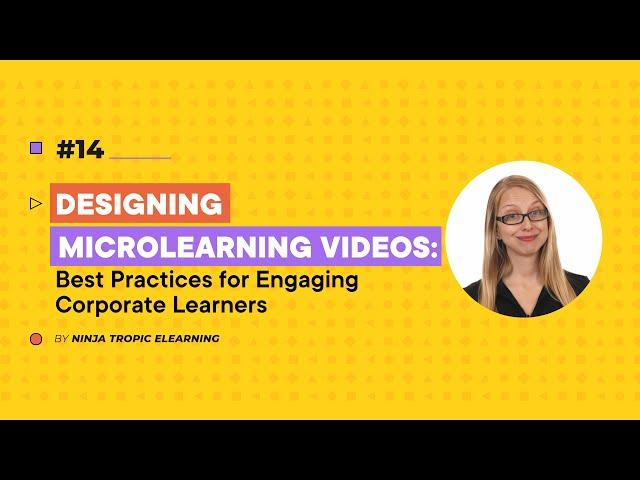How to Design Effective Microlearning Modules: Key Strategies for Maximum Engagement
Microlearning has revolutionized the eLearning landscape, making educational content more digestible, engaging, and accessible. As organizations and educators strive to enhance learner experience and retention, designing effective microlearning modules has become a top priority. In this comprehensive guide, you’ll discover proven strategies and practical tips to create microlearning modules that capture attention and boost learner engagement, ensuring the maximum impact on your training programs.
What is Microlearning?
Microlearning is a learner-centric approach that delivers content in small, easily digestible segments. Thes modules typically focus on a single learning objective, making the process more effective for busy schedules and attention spans. Popular formats include videos, quizzes, infographics, podcasts, and games.
Key Microlearning Characteristics:
- Short and focused (typically 3-10 minutes per module)
- Delivered on-demand via mobile devices or online platforms
- Interactive and engaging
- Designed to solve specific problems or teach targeted skills
Benefits of Microlearning Modules
Adopting microlearning strategies offers several advantages to learners and organizations:
- Enhanced Engagement: Short,focused content keeps attention high and prevents cognitive overload.
- Improved Knowledge Retention: Bite-sized lessons combined with repetition boost long-term retention.
- Flexible and Accessible: Modules are available on mobile devices, making learning possible anywhere, anytime.
- Cost-Effective: faster to develop, update, and distribute compared to conventional eLearning courses.
- Better Tracking and Analytics: Easy to assess learner progress and performance using detailed data reports.
Key Strategies to Design Effective Microlearning Modules
Success in microlearning hinges on careful planning,creativity,and a deep understanding of your audience. Here’s how to design high-impact microlearning modules:
1. Define Clear and Specific Learning Objectives
- Set a single, focused goal for each module.
- Ensure objectives are relevant to real-world scenarios.
- Communicate the expected outcomes clearly at the start.
2. Understand Your Learner’s Needs
- conduct a needs assessment or gather feedback from your target audience.
- Customize content based on learners’ roles, preferences, and challenges.
- Leverage user personas to create content that resonates.
3. Keep Content Bite-Sized and Focused
- Limit each module to a single concept or skill.
- Break down complex topics into manageable steps.
- Focus on “need-to-know” details, avoiding needless details.
4. Incorporate Interactive Elements
- Use quizzes, polls, and interactive infographics to maintain attention.
- Include scenario-based activities or simulations for active learning.
- Gamify modules with badges, scores, or challenges to motivate learners.
5. Utilize Engaging Multimedia
- Add relevant videos, audio clips, and animations for visual interest.
- Ensure imagery and design align with the content and target audience.
- Keep media short, crisp, and purposeful—avoid excessive distraction.
6. optimize for Mobile Devices
- Design content to be easily accessible on smartphones and tablets.
- Use responsive layouts and readable fonts.
- Enable offline access and micro-assessment capabilities.
7. Focus on Active Learning and Practical Submission
- Provide real-life scenarios or case studies for context.
- Challenge learners to solve problems or apply skills instantly.
- Encourage reflection and self-assessment after each module.
8. Provide Immediate Feedback
- Share instant feedback on quizzes and interactions.
- Give constructive tips for enhancement.
- Recognize achievements and progress with micro-certifications or digital badges.
Practical Tips for Maximum Engagement
- Storytelling: Weave stories or relatable examples throughout modules to boost emotion and memory.
- Personalization: Use adaptive learning paths or allow learners to choose topics relevant to them.
- Spaced repetition: Reinforce key points over multiple microlearning sessions.
- Micro-Assessments: Regular short quizzes enhance retention and motivation.
- A/B Testing: Experiment with different formats and techniques to identify what works best for your audience.
Case Studies: Real-World Microlearning Success
corporate Training Transformation
A leading financial services firm revamped its compliance training with microlearning modules. the transition from hour-long seminars to five-minute interactive segments resulted in a 40% increase in completion rates and a dramatic rise in post-training assessment scores.
Healthcare Onboarding Efficiency
A major hospital introduced microlearning for onboarding new nurses,delivering mobile-friendly modules that could be accessed during shift breaks. Knowledge retention improved by 25%, and staff reported feeling more confident and less overwhelmed.
Retail Skill Building
A global retailer deployed scenario-based microlearning to improve customer service skills. Employees could practice handling difficult situations through short, simulation-based modules, leading to measurable increases in customer satisfaction scores.
Microlearning Design: First-Hand Experience
as a content creator and instructional designer, I’ve witnessed firsthand the impact of well-crafted microlearning modules. For exmaple, revamping a traditional sales training program into microlearning allowed learners to master negotiation techniques at their own pace. Feedback indicated that brief, focused sessions fit seamlessly into busy schedules and made learning much less daunting.
Key takeaways from my experience include:
- Iterative progress—regularly refreshing modules based on learner feedback
- Continuous engagement—using push notifications and reminders on mobile devices
- Data-driven improvement—adjusting module content in response to analytics and assessment results
Optimizing Microlearning for SEO and wordpress
To maximize the visibility of your microlearning content on search engines and within WordPress-powered learning management systems (LMS), follow these tips:
- Use relevant keywords like microlearning modules, effective eLearning design, and learner engagement strategies naturally throughout your content.
- Structure your article with clear header tags (
- Optimize images by adding descriptive ALT tags and captions.
- Link to authoritative resources and related internal pages for improved SEO.
- Utilize WordPress CSS classes (such as
.wp-block-image,.wp-block-separator, etc.) for clean formatting and easier navigation.
Conclusion: Empower your Learners with Effective Microlearning
Microlearning is the future of eLearning, offering unparalleled flexibility, engagement, and effectiveness.By adopting proven strategies—such as clear objectives, focused content, multimedia elements, and continuous feedback—you can design microlearning modules that drive real results. Don’t forget to monitor analytics, seek learner feedback, and embrace innovation. Whether you’re developing training for corporations, education programs, or personal development, effective microlearning design ensures your learners gain skills, retain knowledge, and stay motivated.
Ready to boost the engagement of your eLearning courses? Start designing effective microlearning modules today and empower your audience with fast, flexible, and impactful learning experiences.

